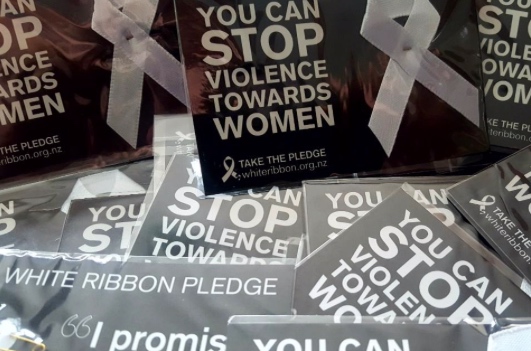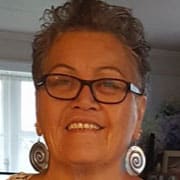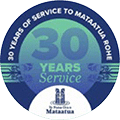In 1974 there was only one women’s refuge in New Zealand. A decade later, 20,000 women and children sought help at one of 34 such refuges. Whanau Awhina Women’s Refuge opened for service in 1989 with the support of a collective of women from our district.
Elise Walker a local Whakatane women had for many years provided her home for safety and protection of women and her children whose lives had been effected by family violence.
Mrs. Walker was also very prominent in local community affairs, holding a number of volunteer position, in C.A.B, Whakatane Council Emergency Housing, and many others.
Mrs. Walker made a decision to use her extensive networks to seek support to establish a Women’s Refuge in Whakatane.
In 1987 Mrs. Walker and her team of supporters started to campaign firstly local to gauge support then nationally to lobby the National Collective of Women’s Refuge for the need of the Eastern Bay of Plenty to establish a 24 hour Refuge service.
In 1989 National Collective of Women’s Refuge agreed to the establishment and the inclusion of Whanau Awhina Women’s Refuge. With the help of Housing Corporation and the funding from J.R McKenzie Trust we began delivering services in August 1989.
Our local community was not so receptive, and formed alliance’s to prevent our establishment.
This was a very difficult time for the organisation as people’s reactions to Refuge were based on fear, and prejudice. Many felt that Refuge will down grade property prices, to, Refuge will be complicit in breaking up relationships and families.
Finally after many obstacles we were able to find our first residential property, and begin delivery of both residential and community services for the Eastern Bay of Plenty.
Biggest Achievement
Supporting many women and children and families to live their lives free of violence
To keep family safe and supported whilst residing in our services.
To support families to reach their goals and aspirations.
To challenge the myths of Family Violence and provide strong advocacy and support.
Informing national policy on Family Violence.
Supporting family and community to understand the analyses of family violence.
Bring forward to family and community that the responsibility of change is not the victims of violence, change must include, the partners of victims, Police , Courts, more important family and extended family and our community.
We have retained our uniqueness and autonomy.
30 years later we have with stood political thunderstorm’s both nationally and locally.
Family Violence in 2019
Family violence is a national epidemic in New Zealand. The Eastern Bay of Plenty has featured negatively in the national statistic of New Zealand for family violence for a number of years.
Better Access to Support
· Multi agencies with Family Violence Contracts
· Mobile telephone
· Internet information for support
· Pamphlets and awareness campaigns
· Word of month
· Doctors ,medical clinic, hospital, screening programs forFamily Violence
· Courts Advisors- information support
· Community Corrections responding to the victimsneeds
· Police taking a lead role in Family Violenceresponse
· Population has access to vehicles, transportetc.
· Legal remedies –Protection Orders ParentingOrders
· Legal Aid
· Interagency responses
Current Barriers
• High debt
• Disconnection to family support
• Transit families
• Blended families
• Lack of family support
• Overcrowded living condition
• Housing or the lack of affordable housing
• Fear of losing the children
• Addiction or use of illegal substances
• Non trust in agencies or its representatives
• Families overwhelmed
• Financially overwhelmed
Many of these barriers were absent 30 years ago.
The biggest barrier 30 years ago was shame.
This I believe is still present however does not featured as strongly.
New Zealander’s should not be complacent, or shrug our shoulders or throw up our hand when confronted with the statistic that we have the worst rates of family abuse in the developed world, claiming at least 28 lives a year.
28 lives- 28 women, many are mothers, all 28 are someone’s daughter, granddaughter, grandmother, sister, niece, aunty, wife, partner, lover, friend, in-law, neighbour, work colleague
All 28 of these women death prevented their dreams and aspiration to flourish and blossom. For many they have left behind a devastated children and family members. Their deaths should concern us all.
Our safe-house services continues to be the core of our services, with the addition of community advocacy services, and Living without Violence Program. Whanau Awhina Women’s Refuge for also 30 years has provided a 24 hour Crisis Service for the Eastern Bay of Plenty- 7days a week, 52 weeks of the year.
What Has Changed?
I acknowledge in the past 30 years there has been many legislative changes and responses to Family Violence from succeeding governments.
I acknowledge in the past 30 years there have been many government initiatives to raise the awareness of family violence.
I acknowledge that in the past 30 years that the collusion of need in our community and families, has risen to unpresented level.
The cost of Family Violence to this country, prepared by economist Suzanne Snivelly is $4.1 billion and $7 billion a year – up from just $1 billion in 1994.
Although there has been countless research and interviews from women who have told their stories, there is still a cost to the women if she continues with Police, Family Courts, Oranga Tamariki, Lawyers and others.
Mandatory reporting, Family Violence Interagency Response, Reports of Concerns, Admission to hospital, are but of a few assessment tool design to report Family Violence—with her consent or not.
That Government agencies are now are the recognised lead agencies in Family Violence.
What Has Not Changed?
The voices of change for the victims of family, in my opinion, has been silenced.
30 years in our community the victims of Family Violence are still having to been made to be responsible for their partner’s violent behaviours.
Women and children continue to be unsafe in this country even with the current interventions.
Consequences
It is now mandatory for all government agency and non-government agency to report if there is actual or have concerns that a child or children are victims of family violence or have or are witnessing family violence.
Multi Agency approach have different legal outcomes and threshold which at times are difficult for any parents to navigate.
One of the premise used, is, if the mother of the child/children is unable to leave her violent partner or unable to keep her safe from her violent partner, she is therefore, unable to ensure the safety of her child/children. This is a an grievous premise
For example: The requirement from Family Court and from Oranga Tamariki requires serious navigating. At times women are required to complete the following:
• Parenting Program
• Living without violence program
• Child care of children in her care
• Family Court Living through separation program
• Family Court mediation
• Lawyers – seeking Day to Day Parent Order
• Protection Orders
• Housing (critical to establish stability)
• Lawyer for Child
• Counselling
• Children’s Team
• Medical support
• Budgeting – Must show that she is capable of providing financial support
• Counselling
• Early childhood and Schools
All this at a time when most women are in shock of the impact of separation the impact of exposing the violence, and the loss of family, friends, and the place she and her children have called home.
Multi agencies requirements are at time intrusive and failure to complete task could have an impact on her retaining the children. Often women are classified as difficult and non-engaging if failure to attend or failure to respond to an agency task list.
Many women and children are relocated to other regions of New Zealand for safety and often for the opportunity to feel secure and to try to regather her family. This is particularly difficult for women who have strong whakapapa links to their papakainga and marae.
Women also have the odorous task of making changes for the future of their children, changing many of the day to day actives to either another region or area. At times this causes a lot of anxiety for the family.
Accumulated debt is also another factor to consider as she transition with her children to a unknown future. Over the years we have witnessed a leap of debt burden that directly impact on women and her children’s future. This debt confines her to remain powerless and limits opportunity.
Whanau Awhina Women’s Refuge applaud the thousands of women and their children who have triumphantly navigated the obstacles and are living their best life.
The options available to our community is to work the same way – ensuring the same results or to consider how to work together that has in the fore front the safety and protection of all to ensure all families live their best lives.
Women and children continue to be unsafe in this country.





